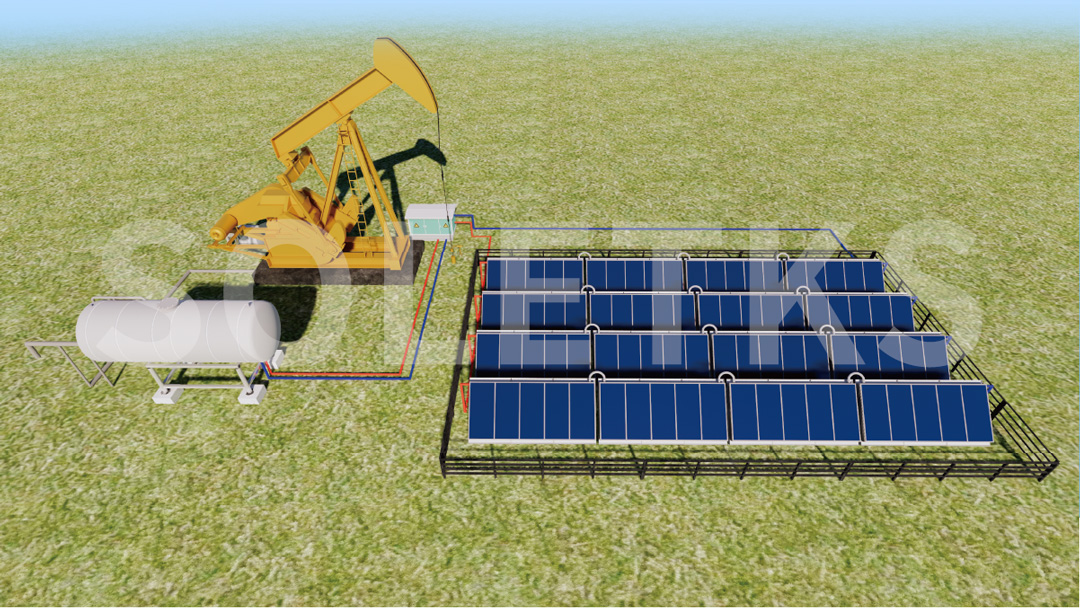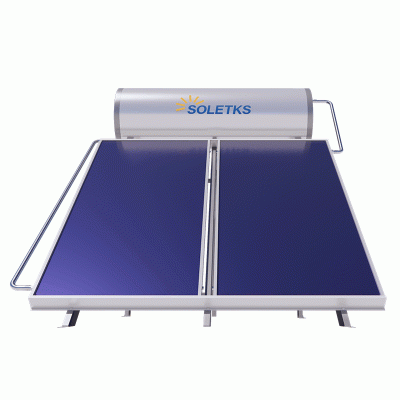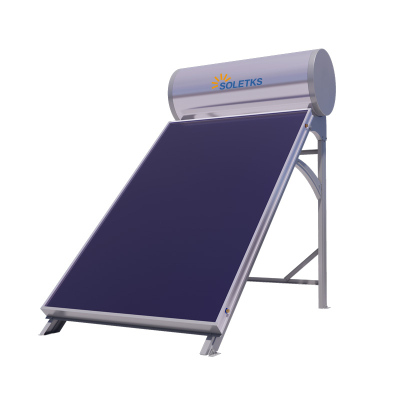Solar-Powered Oilfield Heating System
Solar-Powered Oilfield Heating System
1. System Features
The oilfield heating system is a clean energy solution that uses solar thermal energy as its main power source. It is specifically designed to meet the heating demands in oil extraction and related industrial processes. Compared with traditional methods such as coal, gas, or electric heating, this system not only reduces energy consumption and operating costs but also provides remarkable environmental benefits.
High Efficiency and Energy Saving
The system adopts a “non-powered direct heating station” design, which maximises the efficiency of flat-plate solar collectors. With high collection efficiency and low heat loss, it generates heat more quickly than conventional systems. By optimising piping layouts and system integration, solar thermal energy is fully utilised, reducing both costs and energy consumption.
Green and Eco-Friendly
Solar energy is abundant, clean, and renewable. It produces no wastewater, exhaust gas, or noise during operation. In oilfields, where environmental protection is critical, this zero-pollution feature is particularly valuable. The system ensures zero emissions during operation and aligns with national strategies for carbon peaking and carbon neutrality.
Low Overall Energy Consumption
The system runs almost entirely on solar energy, avoiding the continuous input of fuel or electricity required by traditional heating. Over its lifetime, it significantly lowers total energy use, boosting both economic returns and social benefits. For energy-intensive sectors like oilfields, this is a major advantage.
Low Operating Costs
Once installed, the system has minimal ongoing energy costs, since it relies on solar thermal energy. With a one-time investment, users can enjoy long-term benefits. In oilfield operations where heating loads are stable and long-term, this makes the system especially cost-effective and sustainable.
2. System Working Principle
The core of the system lies in solar thermal conversion and storage. Solar collectors or concentrators capture sunlight and convert it into heat. This heat is transferred through a working medium (such as antifreeze solution or heat-conducting oil) to a thermal storage unit.
The thermal storage unit acts like a “battery for heat”, storing energy during sunny periods and releasing it during the night or on cloudy days, ensuring stable heating for oilfield operations.
Smart control systems adjust the operation in real time according to weather conditions and process demands. For example, the system prioritises solar energy when sunlight is sufficient, and automatically switches to backup sources when sunlight is limited. This guarantees a continuous and reliable heating supply.
3. Application Value
The oilfield heating system is not only equipment but also a strategic tool for improving efficiency and sustainability.
Economic Benefits: Reduces costs associated with fuel purchase, transport, and storage, significantly lowering long-term expenses.
Environmental Benefits: Cuts CO₂ and harmful emissions, supporting a green transformation of oilfield operations.
Social Benefits: Promotes the use of solar energy in industrial applications, driving the integration of clean energy with traditional industries.
Sustainability: Extends the economic life of oilfields and enhances corporate social responsibility and brand image.
4. Future Prospects
With the ongoing push for carbon neutrality, the application of solar-powered oilfield heating systems will become increasingly widespread. In the future, these systems will integrate with smart and digital technologies—such as energy monitoring, remote control, and big data analysis—to further improve efficiency and reduce maintenance costs.
Moreover, hybrid systems that combine solar energy with other renewable sources such as geothermal and air-source heat will offer even more flexible and reliable heating solutions.
As a leader in clean thermal energy solutions, Soletks Group is committed to promoting solar heating systems in oilfields, bringing green innovation into traditional energy industries. Through continuous innovation and industrial upgrading, the Group is helping the energy sector move toward a low-carbon and sustainable future.





